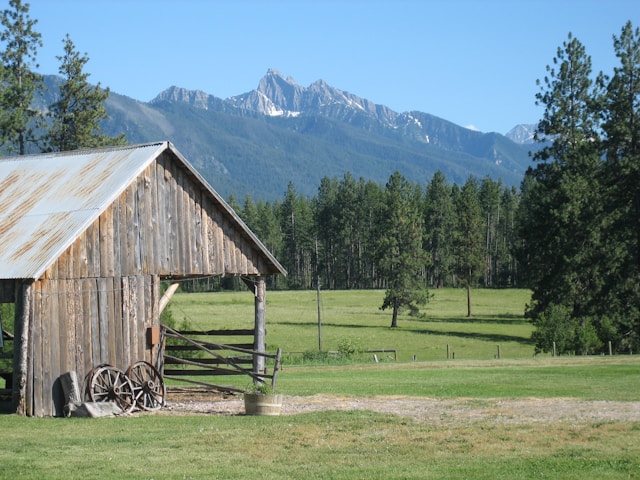Key Takeaways
- Grasp the fundamental importance of tailored ranch insurance policies.
- Seek out policies that provide adequate coverage without overpaying.
- Understand the nuances of protecting your primary ranch assets.
- Ensure your liability coverage matches your ranch’s activities.
- Regular reviews of your policy can prevent insurance gaps and financial loss.
Table of Contents
- Understanding the Basics of Ranch Insurance
- Navigating Policy Selection
- Liability Coverage: Beyond the Basics
- Valuing Your Property Correctly
- The Importance of Regular Policy Reviews
- Working with Insurance Agents
- Claim Filing and Support
- Future-Proofing Your Ranch with Insurance
Understanding the Basics of Ranch Insurance
Running a ranch encompasses a labor of love, but practical concerns must be addressed beneath the rustic exterior. Foremost among these is securing the right ranch insurance to protect against the unexpected. It’s a safeguard that combines various insurance products tailored to the unique needs of ranchers, covering the gamut of potential risks, from property damage and equipment loss to issues of liability and livestock health. The cornerstone of ranch insurance is understanding your coverage needs, which involves carefully reviewing every aspect of your operation. Consider the number and value of the livestock, the type and scale of crops grown, the implements and machinery in use, and the structures on your property. Once you have a clear overview of your assets and risks, you can work with an insurer to craft a policy that protects you without excess, ensuring you pay only for the coverage you need.
Navigating Policy Selection
Choosing the right insurance policy for your ranch balances protection with the economy. It’s essential to read each policy thoroughly, with an eye on what is included and what is excluded. Some policies may provide for the basics, like property and liability insurance, but may not cover more specialized needs, such as flood damage or specific types of liability that could be integral based on your ranch’s location and activities. Also, consider the mechanics of the insurance policy, particularly deductibles and policy limits. Deductibles are the amount you agree to pay out of pocket before the insurance coverage kicks in after a loss, and choosing the right deductible can dramatically affect your premiums. On the other hand, policy limits set the maximum payout the insurer will provide, which should be aligned with the actual value of your ranch’s assets. Navigating these choices requires careful consideration to ensure broad coverage without paying for extra protection.
Liability Coverage: Beyond the Basics
Much like any other business, ranches bear the risk of liability for injuries on the property, whether to workers or visitors. Liability insurance for a ranch can also extend to environmental impact and compliance with regulations, which is increasingly essential in today’s regulatory landscape. Operations such as agri-tourism, which may include activities like farm stays, petting zoos, and hayrides, amplify the need for robust liability coverage due to the increased risks posed by public engagement on the ranch premises.
Valuing Your Property Correctly
An accurate valuation of your ranch property, including assets and dwellings, is critical for obtaining the appropriate amount of coverage. Valuation mistakes can lead to two significant problems: over-insurance, which leads to unnecessary higher premiums, or underinsurance, which can be financially devastating in case of a loss. Ensuring valuations are kept current and reflect market conditions is critical to wise insurance planning.
The Importance of Regular Policy Reviews
The insurance needs of a ranch can change significantly over time due to factors such as asset acquisition, expansion of operations, and shifts in market dynamics. Regularly reassessing your insurance policy ensures that your coverage reflects the current state of your ranch and its activities. In some cases, existing policies may need to be adjusted, expanded, or even reduced to stay in line with the operational reality and to guarantee that you aren’t overpaying for coverage or find yourself underinsured.
Working with Insurance Agents
Choosing the right insurance agent is as important as selecting the proper coverage—they guide you through the complex terrain of insurance policies. They can offer invaluable advice tailored to your specific needs. A specialized agent can make the difference between a policy that appears to fit and one that truly aligns with the intricacies of your ranch operations. Agents can also play a critical role in the claims process, providing guidance and support when you need it most.
Claim Filing and Support
Understanding how to file a claim efficiently is essential in the unfortunate event of a loss. The process includes:
- Prompt notification of the insurer.
- Detailed documentation of the loss.
- A precise understanding of the claims process.
While this can seem daunting, the right insurance agent will provide support and clarity, helping you navigate the timeline and requirements for a successful claim experience.
Future-Proofing Your Ranch with Insurance
In the face of a changing climate and fluctuating markets, it’s not enough to insure your ranch against current risks—you must also consider what the future might hold. Forward-thinking insurance practices include anticipating potential threats and updating policies accordingly. Whether it’s changes in regulatory policies, market conditions, or the advent of new technology, staying ahead of these shifts is crucial.

